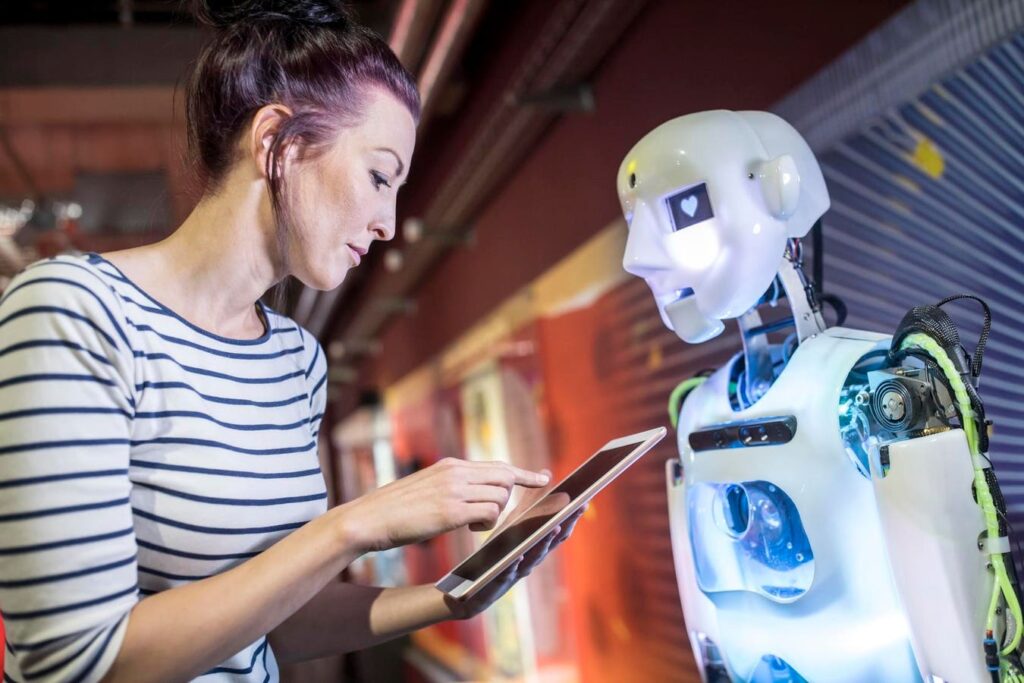What a great idea! I will make your eye into a heart emoji…
getty
Artificial intelligence (AI) is fundamentally altering the landscape of work, especially in the context of rising return-to-office (RTO) initiatives. By automating mundane tasks such as data entry, scheduling, and customer support, AI liberates professionals to engage in higher-value tasks like collaboration and strategic interaction. However, in a world where leading firms like Amazon and Dell mandate in-office presence, one must question whether physical attendance is essential for career success.
In white-collar sectors—finance, marketing, and IT—AI tools like ChatGPT are taking on the “grunt work” that used to consume employees’ time. This transformation can be a double-edged sword for remote workers. While AI technologies such as Google’s Gemini and Slack’s AI integrations streamline workflows and enhance productivity, they also raise concerns about job security for remote employees as efficiency for tasks increases.
Is AI a Threat or an Enabler for Remote Work?
Neel Parekh, the CEO of MaidThis, articulates the dilemma well: “People wanted remote jobs and then got replaced by global talent that works twice as hard for half the cost. Now AI is also encroaching on those positions.” Beyond simply boosting productivity, AI serves as a force multiplier, enabling companies to delegate tasks either to machines or more affordable labor anywhere in the world.
As companies streamline processes and decrease headcount, they gain leverage in RTO efforts. If remote workers hesitate to return, AI becomes a convenient justification for restructuring. Recent mandates from industry leaders, including Elon Musk and Vivek Ramaswamy at DOGE, focus on attrition as part of this transition. The underlying message is unmistakable: adaptability and a willingness to collaborate in person might soon determine job security, particularly for government employees.
The Importance of Human-AI Interaction
Savhil Lavingia, founder of Gumroad, points out that while AI takes care of execution tasks like coding and content generation, the most significant bottlenecks now lie in cognitive areas: problem-solving, maintaining energy levels, and generating innovative ideas. In-person collaboration can effectively overcome these limitations, fostering spontaneous discussions and quick brainstorming sessions that stimulate creativity and problem-solving.
In the AI era, remote work offers advantages such as maintaining operations across various time zones. A hybrid model—with core teams working together in-person and remote members sustaining momentum—could provide an optimal solution. This approach recognizes the vital role of collaboration, which resonates across industries.
Understanding the Push for Return to Office
The move toward RTO is not merely a response to AI advancements; it also stems from acknowledging the limitations of AI technology. While AI excellently manages routine tasks, it falters in areas requiring:
- Creative Ideation: AI can generate ideas but lacks the human insight and originality crucial for innovation.
- Emotional Intelligence: The ability to build relationships and resolve conflicts remains a uniquely human skill.
- Contextual Understanding: Complex decision-making often eludes AI, which may overlook important nuances.
- Decision-Making: The complexity of evaluating multiple facets of challenges is still a distinctly human endeavor.
These gaps underscore the ongoing necessity for human collaboration in business. Successful organizations exist at the convergence of people, processes, and profits. Exploring how to design work effectively, possibly aided by tools like ChatGPT, can illuminate ways to adapt to new RTO policies and safeguard your career in an AI-dominated age.
The Impact of AI on the Future of Work
Artificial intelligence (AI) is ushering in a significant transformation in the workplace, especially as many companies are encouraging employees to return to the office (RTO).
By automating repetitive tasks such as data entry, scheduling, and customer service, AI frees up valuable time for employees to engage in more meaningful and collaborative activities.
The Double-Edged Sword of AI for Remote Workers
While AI tools like Google’s Gemini and Slack integrations simplify workflow and communication, they also raise concerns for remote workers.
Enhanced efficiency from AI can lead to job redundancy, making employees feel vulnerable in their positions.
The ongoing tech revolution demands adaptability, leaving some workers questioning their role.
AI: A Threat or an Asset?
Neel Parekh, CEO of MaidThis, encapsulates the current dilemma: remote workers are facing competition from both cheaper global talent and AI systems that can perform tasks more efficiently.
The rise of AI is not only enhancing productivity but also enabling organizations to evaluate their workforce critically, leading to potential job losses in roles heavily reliant on tasks that AI can now manage.
The RTO Push: Beyond AI’s Capabilities
Companies are pushing for RTO not solely as a direct response to AI capabilities but as a recognition of AI’s limitations.
While AI excels in automating tasks, it cannot replace the human nuances of creativity, emotional intelligence, and decision-making.
Understanding these differences is vital for maintaining effective workplace dynamics in an AI-dominated landscape.
The Need for Human-AI Collaboration
Experts suggest that the future of work lies in human-AI collaboration. With AI managing execution tasks, the focus shifts to overcoming cognitive bottlenecks through in-person collaboration.
Working together fosters spontaneous discussions and quick idea exchanges, enhancing creativity and problem-solving capabilities.
Adapting to the New Workplace Culture
As the employment landscape shifts, professionals must adapt to emerging workplace trends. Understanding how to blend AI capabilities with human collaboration will be crucial
for career sustainability. Emphasizing adaptability and the ability to work collaboratively may become essential for job security in today’s evolving environment.


